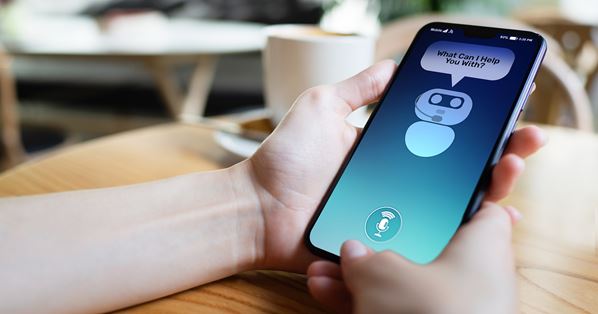
New survey on customer service automation reveals 83% of consumers are willing to make messaging their primary means of contacting customer support.
Helpshift, the company revolutionizing customer service through its intelligent digital-first platform, has released new data revealing consumer sentiment about chatbots and automation in customer service. The study also zeroes in on opinions on the state of customer service during busy periods, like the holidays.
Customers are more accepting of automation and chatbots than ever before. Today’s consumers are focused on efficiency when it comes to solving their customer queries. In a digital-first world, automated chatbots and messaging are taking off — as shown by anonymized and aggregated data of brands using Helpshift — because of their efficiency and ability to provide an asynchronous conversation. Efficiency is the common denominator when it comes to consumer preferences and brand objectives as shown by these key findings:
Twice as many consumers will engage with chatbots. 30% of respondents reported that they would knowingly engage with a customer support chatbot because “chatbots are very helpful.” This is double the number of 2018 respondents who stated this. The research also revealed a 19% year-over-year drop in the number of consumers who found chatbots annoying.
83% of respondents would make messaging their primary means of contacting customer support if they could be guaranteed an immediate response, compared to 76% in 2018. By taking advantage of the right customer service automation — like purpose-built chatbots — brands can support this growing consumer preference for immediate support.
The average number of distinct messages sent by all chatbots (i.e., chatbot outbound) increased an average of 35% from Q1 to Q2 amongst brands using Helpshift. In comparison, total issue volume expanded by 24% while agent outbound messages increased just 8% during that time frame. So, even as the volume of issues rose dramatically, agents did not significantly increase their issue load.
96% of consumers told us it is important being able to return to and pick up a customer support conversation where it left off. Not only is this a vast majority of consumers, it’s greater than the 92% who agreed in 2018. This is a capability unique to messaging and connected customer service.
54% of respondents say customer service has actually improved in the past year, compared to only 43% in 2018.
A plurality of all age groups agreed, with the exception of Baby Boomers, where only 28% reported improvement; 13% of Boomers say support has actually gotten worse, while only 8% of respondents overall agree with that statement.
A whopping 66% of Gen Z respondents say service is improving, along with 59% of Millennials and 47% of Gen X.
Americans (55%), Dutch (67%), French (54%) and Germans (62%) all agree that customer service has improved this year, while the British disagree with only 41% seeing improvements.
“Today’s consumers care about having their time valued above all else, and that’s clear in their communication preferences for interacting with brands,” says Helpshift CEO, Linda Crawford. “By giving customers the option to have their support needs met through a more convenient channel, brands adopting chatbots, messaging and other automation-powered customer service initiatives are putting customer needs first. But, as the data suggests, customers aren’t the only ones benefiting from the switch to digital. Brands using Helpshift are expanding their agent bandwidth and funneling customer queries through chatbots to efficiently scale during busy periods.”
Massive increases in retail volume during the holidays can trigger a surge in customer service issues. While the holidays often prove to be high stress, Helpshift’s analysis of 71 million chatbot interactions, found that customer satisfaction (CSAT) scores held steady during the difficult time. Examining issues from November and December, 2018, Helpshift revealed key findings, including:
Average ticket volume during the holiday period was 47% higher than the non-holiday period. The average CSAT during the holiday period was actually 0.43% higher than the non-holiday period indicating a slightly higher level of customer satisfaction.
Chatbots handled 64% of all holiday issues for one retailer examined which led to a 13% faster time to first response, avoiding customers’ main headache — waiting for an agent to become available.
Customers value efficiency; and to increase efficiency, brands must step into the digital age with the help of automation and chatbots. However, technology only goes so far and the need for live agents remains for certain support queries. Therefore, a combination of chatbots and live agents is “the sweet spot,” as demonstrated by the combination of agents and chatbots leading to the highest CSAT across the board.
The bottom line: By automating to increase efficiency for your customers and brand, you can satisfy customer expectations and drive better results in the process.
You can sign up and view the full report here.
Additionally, Helpshift is launching an “MBA in Customer Service Automation” webinar series to help customer service professionals integrate automation into their support stack. You can register for free here.
Methodology
Helpshift performed a survey between July 21-August 13, 2019 of 2,353 consumers across the United States, United Kingdom, Netherlands, Germany and France. Additionally, Helpshift aggregated and anonymized data from more than 75 million customer service tickets since November 2018 to contribute to these findings.




